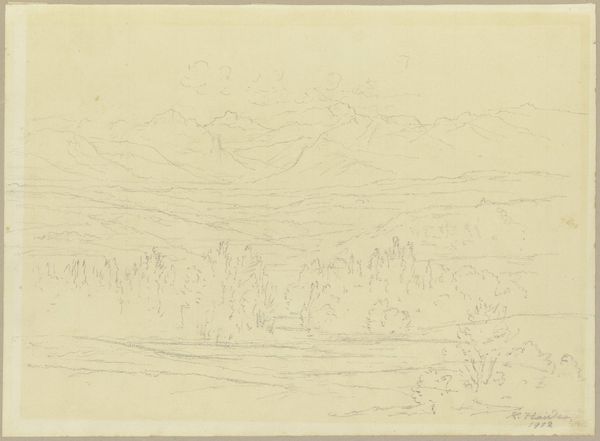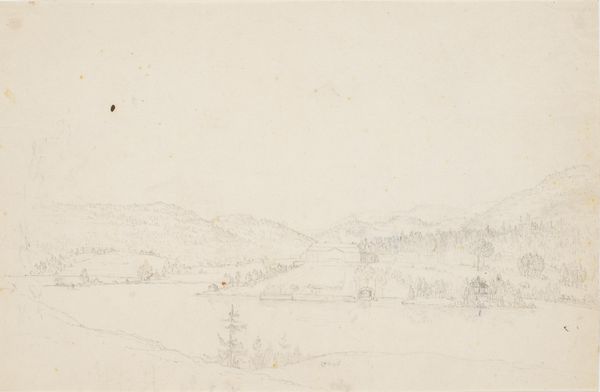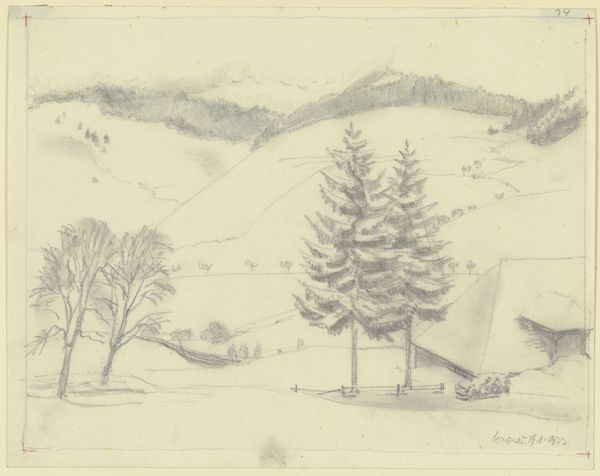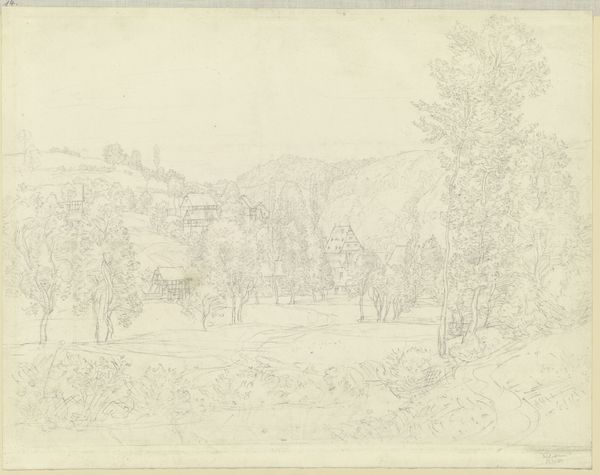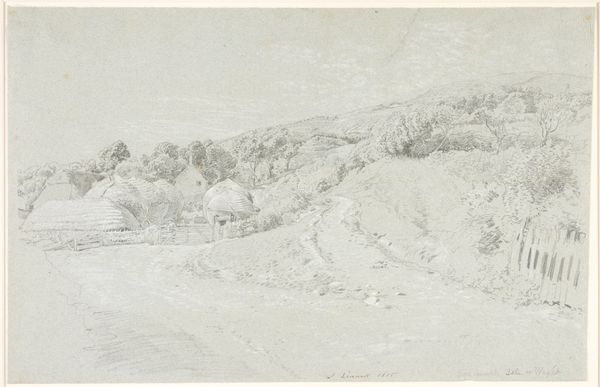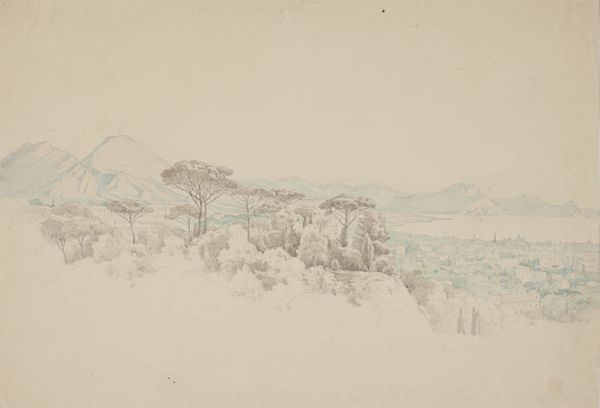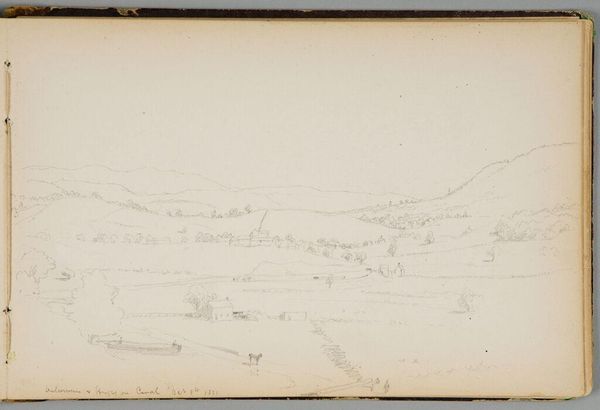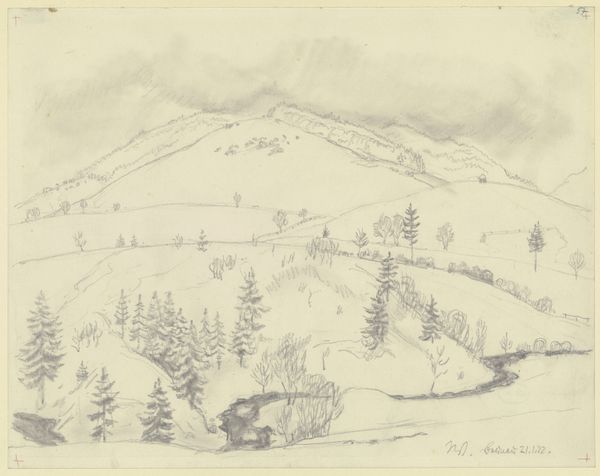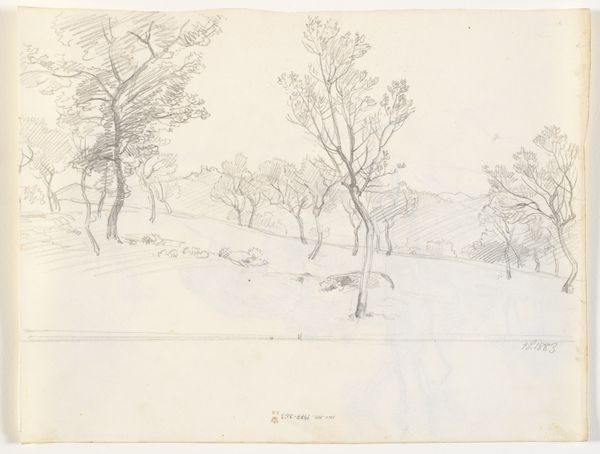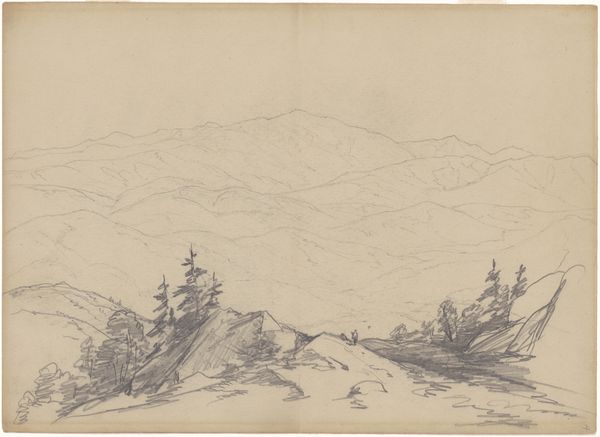
drawing, plein-air, paper, pencil, graphite
#
drawing
#
plein-air
#
landscape
#
paper
#
pencil drawing
#
pencil
#
hudson-river-school
#
graphite
Copyright: Public Domain
Editor: So, here we have Jervis McEntee's "Mist on the Mountains," a graphite drawing, most likely on paper. It's an undated work, but it feels so delicate and tranquil, a real testament to close observation. How do you interpret this work from a formalist perspective? Curator: A keen question. First, consider the interplay of line and tone. McEntee masterfully uses graphite to create varying degrees of density, implying spatial recession and atmospheric depth. Note how the mountains, though the largest form, are rendered with a lighter touch compared to the trees in the middle ground, shifting the supposed depth of field. Editor: That's interesting. It does flatten the picture plane in a way, drawing the eye back and forth. Curator: Precisely. And the composition is far from symmetrical. The careful distribution of forms—the placement of the trees, the subtle curve of the path—creates a visual rhythm. Could this suggest an implicit visual equation of near, medium, and far in equal parts? Editor: So, you're saying the balance is not merely aesthetic, but perhaps conceptually driven as well? Curator: Potentially. Now, observe the texture achieved purely through graphite. The short, broken lines that constitute the foliage versus the smoother, more blended strokes used for the mountains; how might we read these signifiers? What do these distinctions highlight in the represented subject? Editor: I see. The change in texture emphasizes the difference in the materiality of the mountains versus the more tangible sense of detail and volume from the tress. It's a very considered composition. Curator: Indeed. Reflect on how McEntee’s restrained use of medium allows him to evoke a powerful sense of atmosphere, challenging the viewer to appreciate the intrinsic qualities of the materials themselves, as much as the depicted landscape. Editor: It highlights that the magic is as much in *how* it’s drawn, as in *what* is drawn. Thanks!
Comments
No comments
Be the first to comment and join the conversation on the ultimate creative platform.
